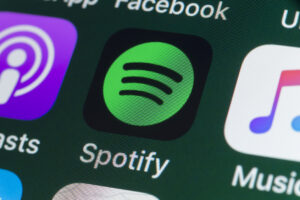Study shows employees still need access to mental health services, Gallup reports drop in employee engagement
Plus, how the pandemic affected creativity.

Greetings, comms pros! Let’s look at some news stories from this week and see what lessons we can learn from them.
1. Study reveals that employees still need access to mental health services
It’s no revelation that the pandemic had a major impact on the mental health of employees across the world. There’s plenty of scientific reporting to prove it. But three years on, some employees report that they don’t have the tools they need to keep themselves fully mentally healthy. A study by Lyra Health showed employees need more resources for mental health.
Survey data published Tuesday by the mental health benefits vendor showed that 86% faced at least one mental health challenge in 2022, but only one-third said they received support from a therapist, a psychologist or self-care resources. That included 40% of those with severe or chronic depression and 28% of those with conditions such as ADHD, bipolar disorder and post-traumatic stress disorder.
This is concerning data, to say the least. It further underscores the need for employers to make mental health spending and resource management a point of focus going forward. From an organizational perspective, we need to help our employees be their best selves both inside and outside the workplace. Mental healthcare investment is a powerful way to show that employees are valued and cared about.
2. Gallup report shows a continued decline in employee engagement
If there were a ranking list of aspects of internal communications that have an impact on the bottom line, employee engagement would be near the top of that list. But a recent report from Gallup revealed that employee engagement dropped for the second year in a row, to just 32% of reported being engaged at work.
According to the company’s report, Gallup also found a six-point drop in employees who are extremely satisfied with their company as a place to work. “These are all indications that employees are feeling more disconnected from their employers,” the analysis, written by Jim Harter, says. “Clarity of expectations was lower across many demographic groups including age, gender, managerial status, remote working status, and job types. Other engagement elements were affected differently across demographic groups.”
The report went on to state organizations can remedy this lack of engagement. with a focus on a robust culture, flexible work practices, and increased communication between managers and reports. If you want to keep employees engaged, you need to figure out what it is they want and need. If you’re taking a one-size-fits-all approach in 2023, you might need to rethink that if you want real employee engagement.
3. COVID’s impact on creativity
The pandemic has had widely sweeping impacts across our world, among them the question of how it has impacted the way we express ourselves creatively. You might have noticed a dip in standout ads at the Super Bowl or may think there’s not a lot of creative television on right now. Well, you aren’t alone, as there are many who feel creativity has dipped, but they think remote work settings aren’t solely to blame. AdAge spoke with numerous industry figures and asked for their take on the issue.
They fault factors including a shift in marketing and budgeting priorities, a project-based environment that erodes trust, a fragmented media landscape that buries good ideas, the pressure of shorter timelines to deliver work, and a general fatigue due to the pandemic and all of the above.
“The fact that we have to ask ourselves what is to blame for the decline in the quality of our industry’s work is a sign of two things,” said Susan Credle, the global chair and global chief creative officer at FCB. “First, that finally there is an acknowledgment that a lot of work out there is not as good as it should be. And second, that people are worried about that. Both give me hope.”
Creativity is an absolute must when you’re in comms. If your message is boring, no one is going to care about it! But the experts are on to something when it comes to employees feeling pressure to accomplish a great deal on shorter deadlines. Pandemic fatigue is real, and we should be careful not to allow ourselves or our coworkers to get burned out. Burned-out employees aren’t creative ones. Allow for the rest and recharging needed through wellness programs, and hopefully that creativity will shine through.
4. How about some good news?
- Turkish soccer fans threw teddy bears on the field for children affected by the recent earthquakes there
- Heinz is offering to buy a new boat for a man who was lost at sea and survived by eating ketchup
- A lost dog in El Paso found her shelter and managed to ring the bell to get back inside
- Ragan Training is great for communications pros to find inspiration and resources.
- You should be rewarded for your work. Find out how to earn an award here!
Have a great weekend comms all-stars!
Sean Devlin is an editor at Ragan Communications. In his spare time he enjoys Philly sports, a good pint and ’90s trivia night.







